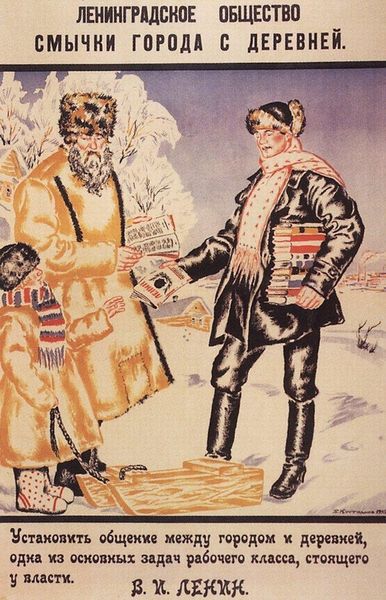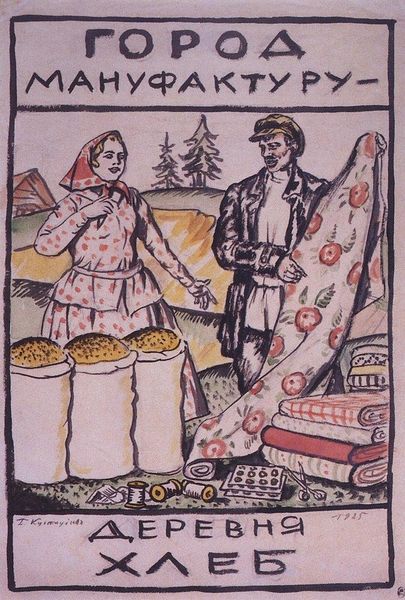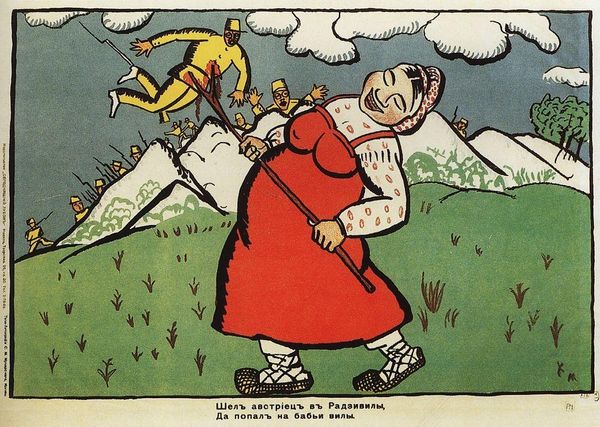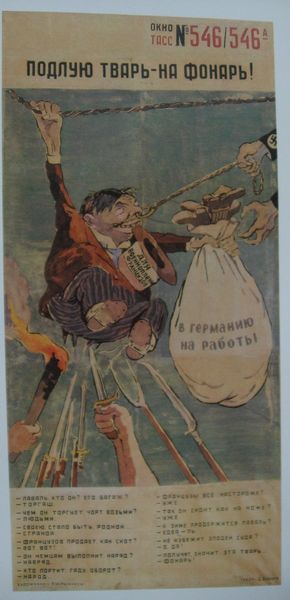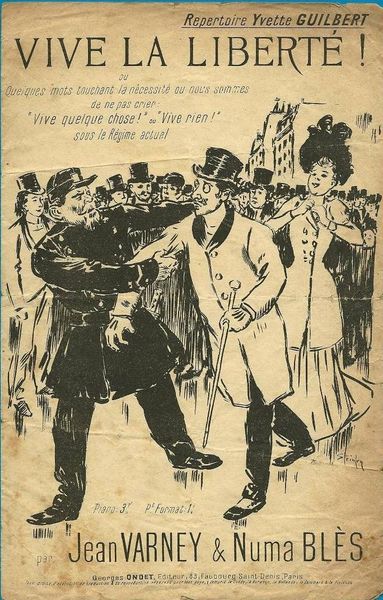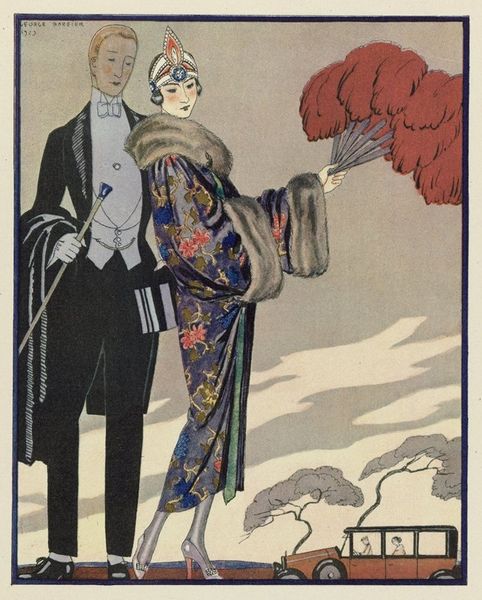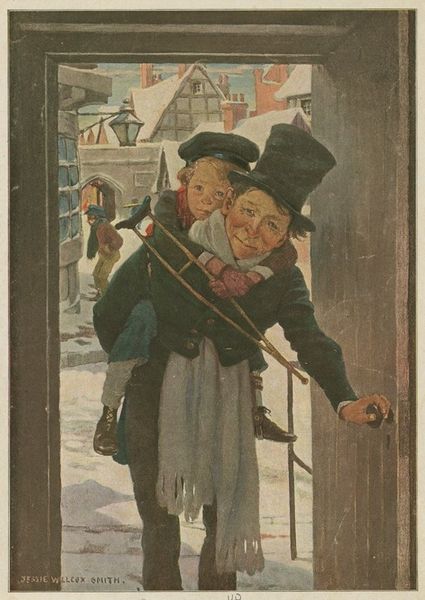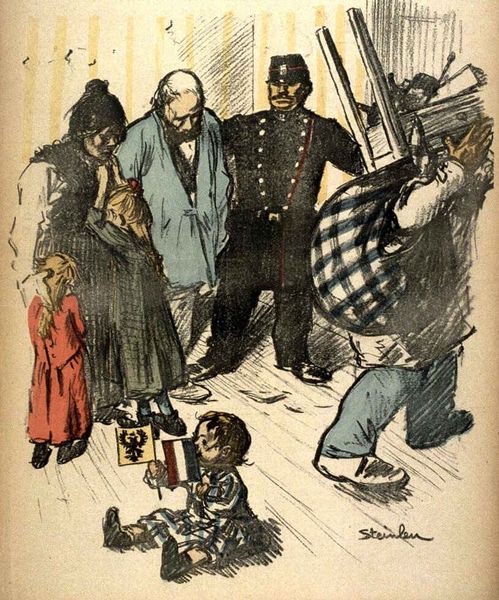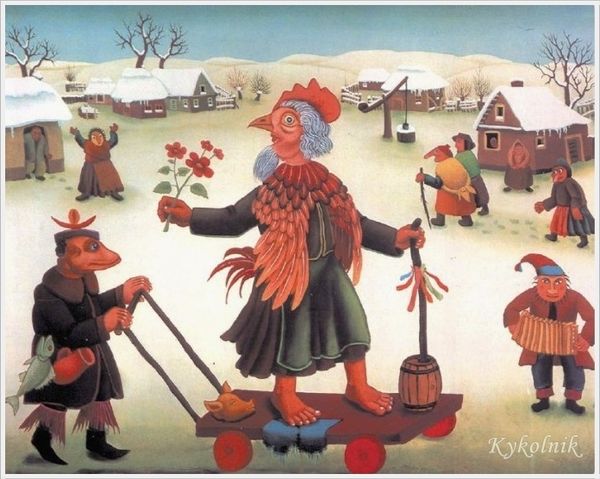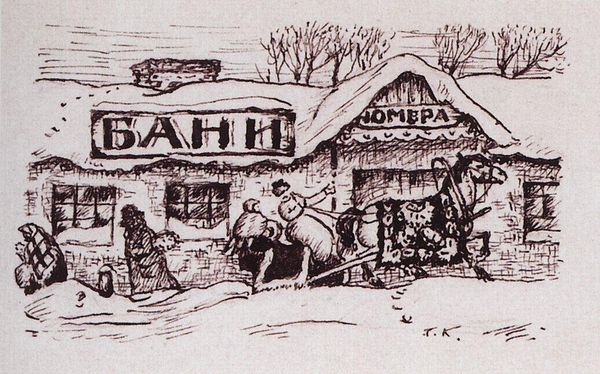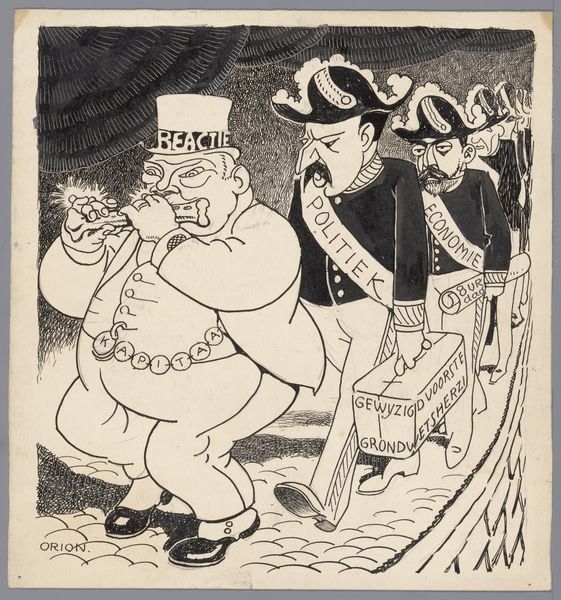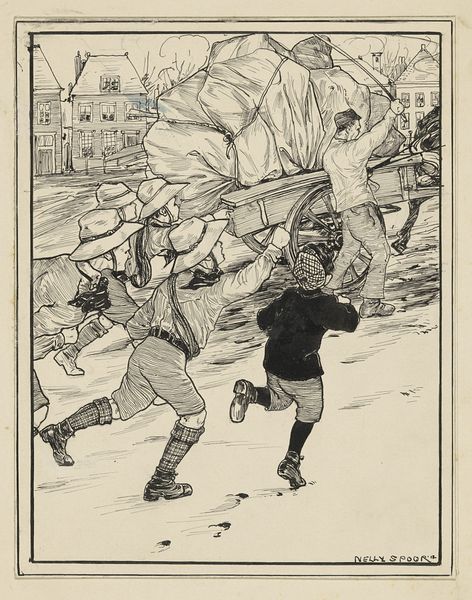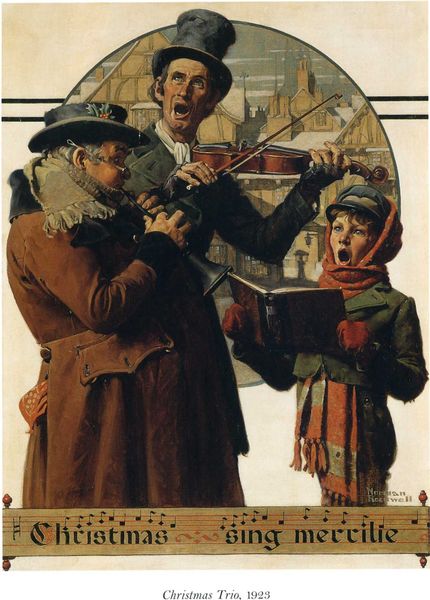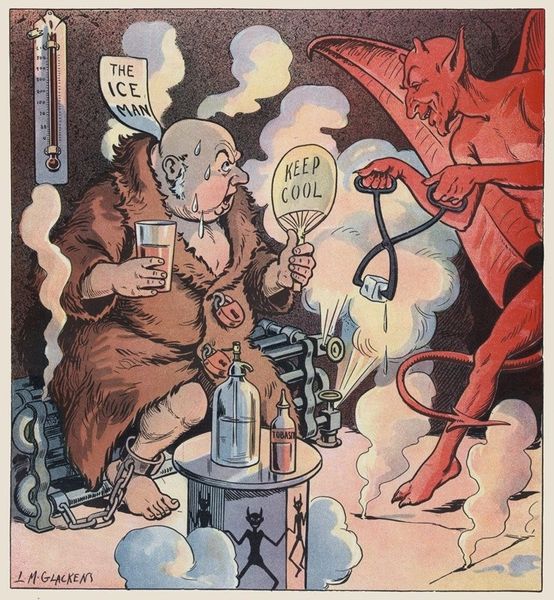
painting, poster
#
painting
#
caricature
#
landscape
#
caricature
#
soviet-nonconformist-art
#
figuration
#
men
#
poster
Copyright: Public domain
Editor: This is Boris Kustodiev’s “Sketch of Poster City gives Book - Village gives Products” from 1925, a painting on a poster. The composition seems simple at first, almost like a direct advertisement, but the more I look, the stranger the figures seem. What do you see in this piece, beyond just surface level messaging? Curator: I see a fascinating intersection of propaganda and social commentary masked as commercial art. This poster needs to be understood in the context of the New Economic Policy in the Soviet Union, where elements of capitalism were briefly reintroduced. It prompts questions about the relationship between the city and the countryside and critiques power dynamics. The figures representing "city" and "village" – who are they really serving, with these exchanges of ideas and products? What do the power structures look like in this trade? Editor: I hadn’t thought of it like that, I just took it for granted that the exchange was a good thing. Curator: The cartoonish quality is misleading, isn't it? Kustodiev exaggerates features to create caricature, and maybe this is highlighting the unequal benefits from this "exchange." Also, I want to ask about the cultural messages around the commodities of the village that seem to offer abundance and stability and contrast that with the potentially limited books in the city? Who exactly gets to have them? Do you notice anything else in this piece that reinforces the idea that this trade wasn't entirely equitable? Editor: Well, the figure representing the village is much bigger than the city figure, and he has far more products. And now that I think about it, I guess propaganda is never really straightforward, right? Curator: Exactly! Propaganda often subtly reinforces existing social hierarchies or attempts to create new ones. Thinking critically about the "why" behind these visual choices is the key. Editor: So, by looking closely and understanding the historical moment, we can unpack so many layers of social commentary embedded within seemingly simple propaganda. Curator: Precisely! Art is never truly neutral. Examining these works through the lenses of gender, race, class, and power, exposes the complex ways that art shapes our understanding of the world. Editor: That's an incredibly insightful perspective. I will look at art through an intersectional lens going forward, considering all angles of cultural influence and power dynamics within society. Thanks.
Comments
No comments
Be the first to comment and join the conversation on the ultimate creative platform.
